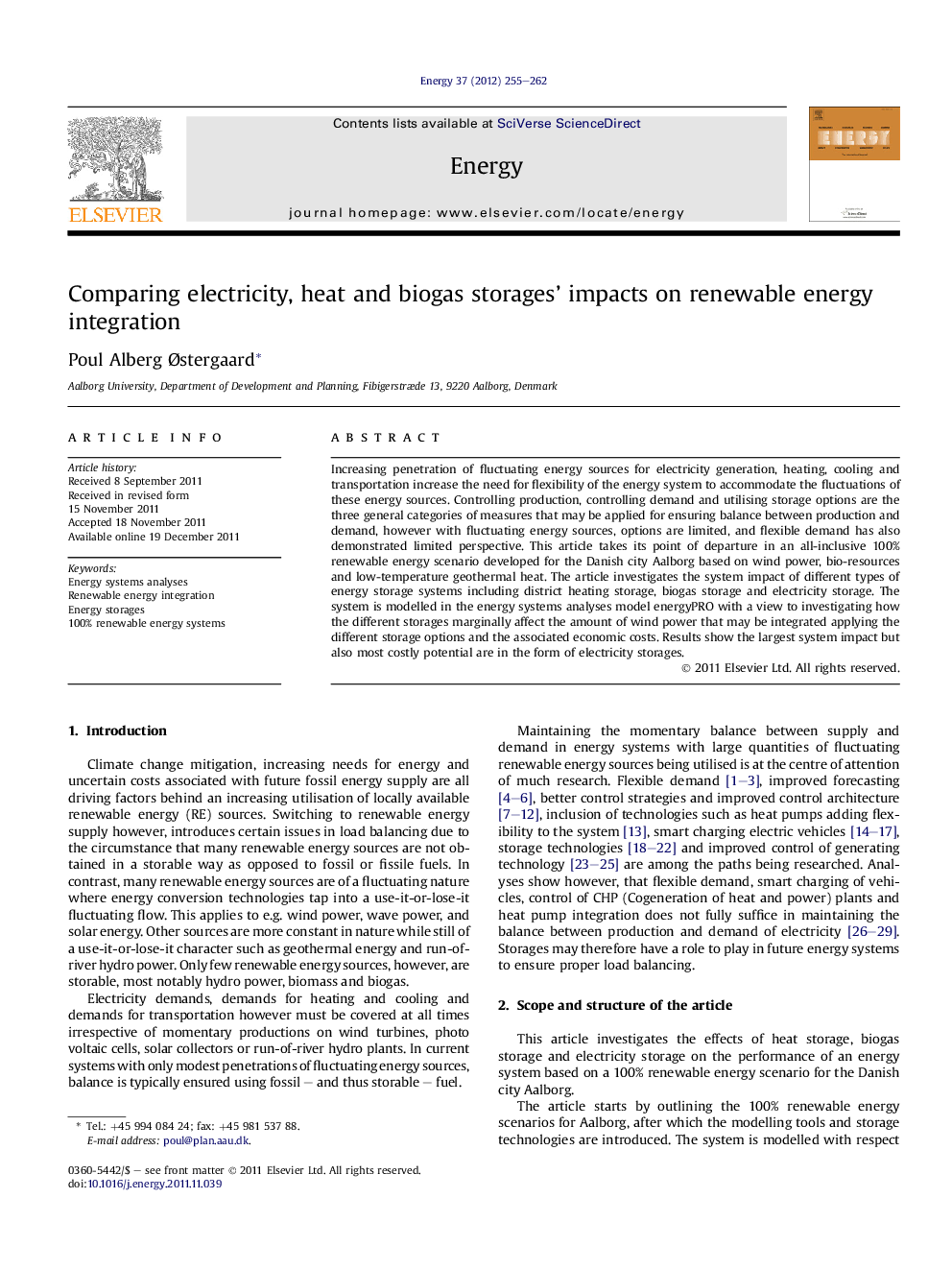| Article ID | Journal | Published Year | Pages | File Type |
|---|---|---|---|---|
| 1733930 | Energy | 2012 | 8 Pages |
Increasing penetration of fluctuating energy sources for electricity generation, heating, cooling and transportation increase the need for flexibility of the energy system to accommodate the fluctuations of these energy sources. Controlling production, controlling demand and utilising storage options are the three general categories of measures that may be applied for ensuring balance between production and demand, however with fluctuating energy sources, options are limited, and flexible demand has also demonstrated limited perspective. This article takes its point of departure in an all-inclusive 100% renewable energy scenario developed for the Danish city Aalborg based on wind power, bio-resources and low-temperature geothermal heat. The article investigates the system impact of different types of energy storage systems including district heating storage, biogas storage and electricity storage. The system is modelled in the energy systems analyses model energyPRO with a view to investigating how the different storages marginally affect the amount of wind power that may be integrated applying the different storage options and the associated economic costs. Results show the largest system impact but also most costly potential are in the form of electricity storages.
► Energy storage in 100% renewable energy systems. ► Hourly analysis in energyPRO and EnergyPLAN. ► Significant flexibility introduced by electricity storage. ► Minor flexibility introduced by biogas and heat storage.
